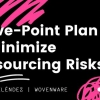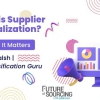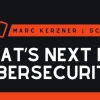If you missed part one of this article, click this link to
read it.
In the first installment of this two-part article, we underscored the importance of collaboration between procurement and IT operations when considering the nature, tolerance for and mitigation of risk. There was also a strong statement about data collection and the minimum amount of configuration details necessary for your vendors to be able to accurately assess the charges with a high degree of certainty. In part two of the article, we will continue with more emphasis on collaboration – no shocker, as much of our writing includes the importance of collaboration. But in this case, the collaboration is in terms of working with your IT colleagues to:
- Organize and categorize the equipment listing to determine RFP scope
- Select vendor candidates based on technical ability and geographic coverage
- Identify the measurements and methods to quantify success
- Establish contract language that promotes a long-term and equitable relationship
As with the first installment, this blog is less about general RFP best practices (because you already know these) and is more about strategies and things to consider very specifically concerning data center hardware maintenance RFPs.
RFP Scope and Vendor Selection
In order to ensure you invite the appropriate vendors to your RFP, we first need to determine what is going to be included in the equipment listing. Make certain that you have a good understanding of not only what is post-warranty in your environment, but also work to categorize the assets as: server, storage and networking gear. Using Excel, have your staff put the corresponding term (server, storage, networking) in a column so that you can filter or sort as needed, and/or create pivot tables. Based on the ratio of the different types of post-warranty equipment, you will understand the profile of your company’s infrastructure. For example, by device type and by asset count you may have 60% servers, 15% storage and 25% network devices. If you have device types that are not in the server/storage/network groupings, put those in a separate RFP.
Desktop, aka End-User-Compute/EUC, is also a different topic and type of support best kept separate from server, storage and networking services. There are specialized devices common to data centers if your asset listing includes the types bulleted below you should hold a separate RFP, or keep them with the respective original equipment manufacturer (OEM). These types are:
- Load Balancers
- WAN Accelerators
- Some Firewalls
- Medical devices
- Backup Power units
Continuing with the organizational work, you will want to determine where your assets are in the world. For many large enterprise IT organizations, it is common to have a relatively small number of large data centers (frequently hosted or co-located) and a large amount of small data rooms.
Certainly, your sessions with IT operations where you discuss risk will come into play here. Not only should device type and location be considered, but in some cases SPECIFIC devices may present such a business risk due to the function they perform that you collectively conclude that keeping this device(s) with the manufacturer may be the most prudent decision. The savings on the balance of the RFP will still be an excellent feather in your cap, so if you must separate a portion of the estate out to be an OEM-only Lot, consider that acceptable.
From a procedural perspective, it is quite common to have a number of “Lots.” These Lot groupings can be combined in various purchasing scenarios so that you and your team can see the risk/reward and make informed award decisions once the results come in. Vendors can be approved to bid for all or only some of these lot groupings, depending on your evaluation of the vendor.
Now that you have the organizational work done, you can consider the players you want to invite. In most cases, you will want to invite the OEM as a control group, if nothing else. While more often than not the OEM does not competitively reduce their charges in RFP, you never can tell. It does happen from time-to-time, and we have seen some rather surprising outcomes. The most likely scenario, though, is that you will have aggressive bidding by the Third Party Maintenance (TPM) industry. If you are unfamiliar with this industry, you can find a definition here:
TPM definition.
There are dozens of highly capable multi-vendor TPMs throughout the world with a fair bit of overlap in terms of coverage territory and coverage in terms of technical ability. There are also highly specialized TPMs that offer services on a relatively select list of equipment types. No doubt someone in your vendor management and/or procurement group has details and records for many of them. At any rate, you should do a good deal of investigation around the policies and procedures with respect to each vendor’s sparing practices and use of subcontracted technical labor, among other things. While there is a fair degree of common practice in the industry, this is not a 100% given, and care should be taken or there may be a disconnect between your service expectations and each vendor’s intentions.
Here is a short listing of third-party maintainers, as an example:
- Global Providers of service for servers, storage and networking would include:
-Park Place Technologies, Curvature, Service Express, Procurri and Evernex
- North American (regional) Providers specializing in networking would include:
-XS International (XSi), Tredent Data Systems and those listed above.
A knowledge base of ideal vendors organized by geography or technical specialty requires a great deal of research to create, but will be very helpful once the venders are vetted.
Measurements of Success and Methods to Quantify
In collaboration with your IT operations partners, you will need to decide the criteria for success – you may have different objectives to accomplish, as compared to theirs. They may insist that success means zero-outages, or a reduction of certain problematic KPI’s from a service perspective. For you, it may be a financial target, or a reduction in vendor count. In either case, work to identify your objectives and get a starting point measurement to compare the eventual outcome against.
If your company does not have standards for benchmarking your internal service user’s satisfaction, you must include regular Client Satisfaction (CSAT) surveys as a part of the awarded contract, and have the vendor provide the details of their Net Promoter Score (NPS) and Customer Satisfaction (CSAT) scores. If you do have these internal user satisfaction standards in place, a before-and-after measurement should be taken. You will be able to either show the effectiveness of the RFP not only from a financial perspective, from a service/response perspective, or from an internal customer satisfaction perspective. Or ideally, all three.
These satisfaction measurements are very effective in helping to identify trouble spots in the service delivered and should be discussed during the service review meetings (that you should make part of the RFP process and eventual contract) with the chosen vendor. These meetings, frequently called quarterly business reviews or QBRs, are highly recommended to ensure robust and clear communication.
Contract Language
Your organization has contract language that has been approved by the legal group, but when it comes to service contracts, we encourage that this language be strong, but fair. And, take great care when designing a service penalty program, as there frequently can be unintended consequences. I have seen far too many RFPs that have really scary looking service-level penalty programs, and I’ve seen the negative result this has had for your company. Usually, such a program is put there to give the client company substantial teeth to inflict pain onto the under-performing vendor, but the company doesn’t usually have an intent to “claw back” money and thereby gain a de-facto “discount.”
HOWEVER, it has almost always been the case that the vendor will pad the charges by a certain percentage “just in case” they have a service lapse and suffer a penalty, or in case the procuring company does have an ill-intent. The point is, inflated penalty programs can have the effect of actually causing a higher charge for the client than might have otherwise been bid. Generally speaking, this type of penalty is simply not necessary. Good contract language and moderate penalties will do the trick, as most vendors in the service industry are hard-wired to SERVE, and failure goes against the culture of these providers.
Amanda Prochaska’s article “
Unleashing Supplier Value” goes into excellent detail on exactly the negative effect of a zero-sum game between client and vendor.
There are many very effective ways to achieve a fair balance and long-term relationship between client and vendor, and you no doubt, have your own techniques. Generally speaking, in data center hardware maintenance contracting the longer the contract can run, the better for all parties. But you will want to ensure that what you contracted for three or five years ago is still a good and fair deal – costs and drivers in the service market do change over time – even with the year-over-year discount you might build into the contract. We are big fans of benchmarking (an effective practice in Europe) as a means to accomplish this certainty and have written articles on the topic that may be helpful. Benchmarking allows the client to conduct an evaluation of the awarded RFP at annual intervals to determine if the charges remain within a certain competitive range.
As with many procurement exercises, data center hardware maintenance RFPs can have a huge number of variations and permutations. Each companies’ situation, infrastructure and objective is different, in some cases wildly different, and so this article can’t be an end-all, be-all on the topic. But hopefully it has helped shed some light on a small but valuable corner of your contracting and procurement activities.









